How Ar Revolutionizing Automotive Industry
How AR revolutionizing automotive industry is reshaping the entire sector, from design and engineering to customer experience and driver safety. AR technology, a dynamic overlay of digital information onto the real world, is transforming how cars are created, sold, and maintained. This innovative approach is poised to significantly alter the future of the automotive industry.
The article will explore how augmented reality (AR) is changing various facets of the automotive industry. From facilitating intricate designs to enhancing the customer journey, AR is making a substantial impact on the industry. The discussion will cover the core concepts, different types of AR, and its applications across various stages, from initial design to maintenance and driver assistance.
Introduction to Augmented Reality in Automotive
Augmented Reality (AR) is a powerful technology that overlays digital information onto the real world, enhancing user experience and offering innovative solutions across various industries. It’s a blend of the physical and digital realms, creating an interactive and engaging environment. This technology is rapidly transforming the automotive sector, from design and manufacturing to sales and service.AR differs significantly from Virtual Reality (VR).
VR creates entirely immersive, computer-generated environments, while AR augments the existing environment with digital content. This key distinction allows AR to maintain a connection to the real world, making it particularly useful for tasks requiring real-time interaction with physical objects. This blend of the real and virtual allows for unprecedented levels of detail and interactivity.
Core Concepts of AR Relevant to Automotive
AR’s core concepts are fundamental to its applications in the automotive industry. Key elements include image recognition, object tracking, and spatial mapping. Image recognition allows AR systems to identify specific objects or patterns in the real world, enabling precise overlay of digital information. Object tracking allows the system to maintain the position and orientation of the digital elements relative to the real-world objects.
Spatial mapping provides a detailed representation of the user’s surroundings, enabling the AR system to accurately place and interact with digital elements within the environment.
Comparison of AR Types in Automotive
Different AR types cater to various automotive needs. Understanding their characteristics is crucial for selecting the appropriate technology.
| AR Type | Description | Automotive Applications | Strengths | Weaknesses |
|---|---|---|---|---|
| Marker-Based | Relies on specific markers (patterns or images) to trigger the display of AR content. | Vehicle assembly line guidance, part identification | High accuracy, simple setup | Limited flexibility, markers must be visible |
| Markerless | Uses computer vision algorithms to track real-world objects without markers. | Interactive vehicle maintenance guides, virtual part placement during design | More flexible than marker-based, works in dynamic environments | Higher processing demands, less accurate in complex scenes |
| Projection-Based | Projects digital images onto physical surfaces. | Interactive infotainment displays, overlaying instructions on work surfaces during maintenance | Creates a compelling visual experience, good for hands-free interaction | Requires a calibrated projection system, potential for environmental interference |
AR’s Impact on Design and Engineering
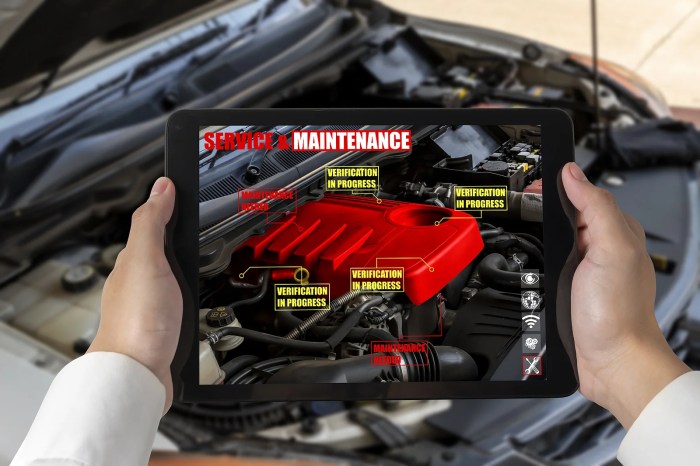
Source: smallbizclub.com
Augmented reality (AR) is rapidly transforming the automotive industry, offering innovative solutions for various stages of vehicle development. AR’s potential to overlay digital information onto the real world provides a powerful tool for streamlining design and engineering processes, leading to faster development cycles and enhanced product quality.AR significantly improves efficiency by allowing designers and engineers to visualize and interact with 3D models within their existing workspace.
This immersive experience accelerates the process of ideation, prototyping, and refinement.
AR in Automotive Interior Design
AR facilitates a more intuitive and interactive design process for car interiors. Designers can virtually place and adjust components like seats, dashboards, and infotainment systems, instantly visualizing the impact of different layouts and materials on the overall aesthetic. This iterative process allows for quicker adjustments and refinements, ultimately leading to a more refined and user-friendly interior design. Engineers can evaluate the ergonomics and spatial relationships in real-time, minimizing physical prototypes and accelerating the design cycle.
AR in Automotive Exterior Design
AR provides designers with a powerful tool for visualizing exterior designs in a real-world context. By overlaying 3D models of vehicle exteriors onto existing physical environments, designers can rapidly evaluate different design choices and their impact on the overall vehicle appearance. This immersive experience empowers designers to explore a wider range of design options and make more informed decisions based on real-world scenarios.
AR in Engineering New Features and Components
AR significantly accelerates the engineering process for new features and components. Engineers can virtually assemble and test new components in a 3D environment, identifying potential design flaws and structural issues before physical prototypes are created. This proactive approach minimizes costly revisions and delays in the development cycle. Early identification of design issues leads to significant cost savings.
AR Simulation for Vehicle Testing
AR enables the simulation of various driving scenarios during vehicle testing. By overlaying digital representations of road conditions, obstacles, and weather patterns onto the real world, engineers can test vehicle performance and safety features in a safe and controlled environment. This allows for the evaluation of complex interactions, such as braking and steering responses under varied conditions, before extensive physical testing.
This method is particularly valuable for testing autonomous driving capabilities and safety systems.
AR’s Impact on Different Automotive Design Phases
| Automotive Design Phase | How AR Enhances the Phase |
|---|---|
| Concept Design | AR allows for rapid iteration and visualization of different design options, enabling designers to explore a wider range of concepts before committing to physical prototypes. |
| Interior Design | AR provides a realistic visualization of interior layouts, enabling ergonomic evaluation and material selection. |
| Exterior Design | AR facilitates the assessment of exterior designs in real-world settings, allowing for evaluation of aerodynamics and visual appeal. |
| Engineering | AR allows for virtual assembly and testing of components, identifying potential issues before physical prototyping. |
| Testing | AR simulates various driving scenarios, accelerating the evaluation of vehicle performance and safety features. |
AR for Customer Experience
Augmented reality (AR) is rapidly transforming the customer journey, particularly in the automotive sector. By overlaying digital information onto the real world, AR empowers potential buyers to experience vehicles in a more engaging and immersive way, significantly impacting the car-buying process. This innovative approach promises to streamline the decision-making process and enhance the overall customer experience.AR’s interactive capabilities allow customers to explore vehicles in unprecedented detail before committing to a purchase.
This tangible experience fosters greater confidence and satisfaction, which are crucial in the competitive automotive market. The ability to visualize features and functionalities virtually enhances the customer’s understanding and appreciation of the vehicle, potentially reducing the need for physical interaction and improving efficiency.
Enhancing the Car-Buying Process with AR
AR significantly enhances the customer experience during the car-buying process by enabling interactive visualization and exploration of vehicle features. This virtual interaction fosters greater understanding and confidence in the decision-making process.
Showcasing Car Features and Functionalities
AR applications offer the potential to showcase a car’s features and functionalities before purchase in a highly engaging manner. Imagine virtually placing a car part in your garage, observing its dimensions and specifications within your own environment. This eliminates the need for physical visits to dealerships and offers a personalized, immersive experience. Users can explore different interior color schemes, seat configurations, and even adjust lighting and sound systems.
Virtual Tryouts and Configurations
AR applications facilitate virtual tryouts of different car configurations. Customers can virtually “test drive” a vehicle, adjusting options like exterior colors, interior materials, and technological upgrades. This interactive experience allows for a personalized and customized visualization of the car, empowering customers to envision the vehicle as a reflection of their personal preferences. Specific apps could offer a virtual showroom where users can explore various models and configure them to their liking.
Interactive Product Demonstrations for Car Parts and Accessories, How AR revolutionizing automotive industry
AR applications can provide interactive product demonstrations for car parts and accessories. Users can overlay digital models of accessories onto their own vehicles, visualizing how they would look and function. This allows for a clear understanding of how an accessory complements the car’s design and enhances its functionality. For example, an AR app could allow a user to virtually install a new spoiler on their car, observing the visual impact in real-time.
Comparison of Traditional and AR-Enhanced Showrooms
| Feature | Traditional Showroom | AR-Enhanced Showroom |
|---|---|---|
| Customer Experience | Limited to physical viewing and salesperson explanations. | Interactive, immersive, and personalized experience allowing customers to virtually explore and configure vehicles. |
| Product Demonstration | Limited to static displays and demonstrations by sales staff. | Interactive demonstrations of car parts and accessories, enabling customers to visualize them on their own vehicles. |
| Efficiency | Reliant on physical presence and potentially lengthy wait times. | Reduced reliance on physical interaction and potential time savings for customers. |
| Cost | High operational costs associated with physical showrooms. | Potential cost reduction through reduced reliance on physical space and personnel. |
| Accessibility | Limited to physical location of the showroom. | Accessible from anywhere with a device and internet connection. |
AR for Maintenance and Repair: How AR Revolutionizing Automotive Industry
Augmented reality (AR) is poised to revolutionize automotive maintenance and repair, offering mechanics unprecedented assistance and efficiency. By overlaying digital information onto the physical world, AR empowers technicians with real-time guidance and detailed visualizations, leading to faster, more accurate repairs and reduced downtime.
AR-Assisted Complex Repairs
AR significantly aids mechanics in tackling complex repairs. Imagine a mechanic facing a challenging wiring issue in a vehicle’s electrical system. AR overlays interactive diagrams and schematics directly onto the vehicle’s components, providing a clear visual representation of the wiring pathways and connections. This real-time guidance minimizes the risk of errors and speeds up the troubleshooting process. The system can even identify potential problems before they arise, preventing costly mistakes.
AR for Repair Overlays and Diagrams
AR overlays are instrumental in guiding mechanics through intricate repair procedures. Using a smartphone or tablet with an AR application, mechanics can visualize 3D models of vehicle parts, step-by-step repair instructions, and detailed exploded views. These overlays can show the precise location of screws, bolts, and other components, allowing mechanics to accurately locate and replace parts. Furthermore, AR overlays can provide real-time feedback and guidance, highlighting potential issues or steps that may be overlooked.
AR for Technician Training
AR offers an innovative approach to training mechanics and technicians. Interactive AR simulations can provide hands-on experience without the need for physical components. Mechanics can practice troubleshooting and repair procedures in a safe and controlled environment, improving their skills and knowledge. AR training programs can be tailored to specific vehicle models and repair tasks, offering personalized learning experiences.
Common Automotive Repair Tasks and AR Efficiency
| Repair Task | How AR Improves Efficiency |
|---|---|
| Wiring repairs | AR overlays provide clear wiring diagrams, guiding technicians through complex pathways and connections, reducing errors and downtime. |
| Engine component replacements | AR displays 3D models of engine components, highlighting specific locations and procedures, ensuring accurate part placement and minimizing errors. |
| Brake system diagnostics | AR overlays can show brake line routing, component locations, and pressure points, enabling faster diagnostics and repairs. |
| HVAC system troubleshooting | AR provides interactive diagrams and schematics of HVAC systems, guiding technicians through component locations and functionalities, improving efficiency in troubleshooting and repair. |
| Suspension component replacements | AR overlays provide detailed visualizations of suspension components, highlighting their precise placement and required procedures, ensuring correct assembly and preventing potential issues. |
AR for Driver Assistance and Safety

Source: fusionvr.in
Augmented reality (AR) is rapidly transforming the automotive industry, and its applications in driver assistance and safety are particularly promising. AR overlays digital information onto the driver’s field of view, enhancing awareness and reducing the risk of accidents. This technology offers a unique potential to improve driving experiences by seamlessly integrating real-world information with digital overlays.AR systems can provide drivers with critical information, such as traffic conditions, navigation directions, and even potential hazards, presented in a clear and unobtrusive way, improving overall safety and driving efficiency.
AR-Enhanced Driver Awareness
AR systems enhance driver safety and awareness by providing real-time, contextual information within the driver’s immediate visual environment. This proactive approach allows drivers to anticipate potential issues and react more effectively. Critical information, such as speed limits, lane markings, and upcoming turns, is presented directly within the driver’s view, reducing cognitive load and improving situational awareness.
Examples of AR-Displayed Information
AR can display a wide range of critical information to the driver. For example, the system can overlay speed limit signs directly onto the windshield, ensuring the driver is constantly aware of the applicable speed limit. Similarly, turn-by-turn navigation instructions can be projected onto the road, guiding the driver to their destination with clear, visual cues. In addition, the system can highlight potential hazards, such as pedestrians or cyclists, providing advance warnings and encouraging safer driving habits.
AR-Based Heads-Up Displays (HUDs)
AR-based HUDs enhance the driving experience by seamlessly integrating digital information into the driver’s view. Instead of requiring the driver to look away from the road, AR overlays relevant data directly onto the windshield, reducing driver distraction and improving overall safety. This integrated approach allows for a more intuitive and immersive driving experience, reducing the cognitive burden on the driver.
Advanced HUDs can display information such as speed, navigation directions, and even vehicle diagnostics, keeping the driver informed without disrupting their focus on the road.
Overlays for Traffic and Navigation
AR can overlay traffic information and navigation data onto the driver’s view. Real-time traffic updates, projected onto the road, can inform drivers about congestion, accidents, and construction zones, helping them adjust their routes and avoid delays. Navigation instructions, presented as clear, visual cues on the road, guide drivers towards their destinations without the need for constant checking of a map or navigation system.
This proactive approach allows for more efficient and safer journeys.
Role of AR in Driver Assistance Systems
AR plays a significant role in enhancing driver assistance systems by providing drivers with real-time information and guidance in a visually intuitive manner. By integrating critical data into the driver’s field of view, AR reduces the need for constant visual scanning of the dashboard and surrounding environment, improving overall driving safety. This integration can further enhance driver assistance systems such as lane departure warnings, adaptive cruise control, and blind-spot monitoring by providing clear and immediate visual cues.
Types of AR-Based Driver Assistance Systems
| Type of System | Functionality |
|---|---|
| Lane Departure Warning | AR overlays visual cues to indicate lane boundaries, alerting the driver to potential lane departure. |
| Adaptive Cruise Control | AR displays the desired following distance to the vehicle ahead, assisting the driver in maintaining a safe following distance. |
| Blind Spot Monitoring | AR visually highlights vehicles in the driver’s blind spot, alerting the driver to potential hazards. |
| Traffic Sign Recognition | AR overlays speed limits and other traffic signs directly onto the windshield, ensuring the driver is aware of the current traffic regulations. |
| Pedestrian/Cyclist Detection | AR highlights pedestrians or cyclists in the driver’s path, providing advance warnings of potential collisions. |
AR in the Future of Automotive
Augmented reality (AR) is rapidly evolving, promising a transformative impact on the automotive industry. Beyond current applications, AR’s potential extends to novel manufacturing techniques, advanced driver-assistance systems, and unprecedented customer experiences. This exploration delves into the emerging trends, potential challenges, and the profound impact AR will have on the future of cars.
Emerging Trends in Automotive AR
The automotive industry is witnessing a surge in AR applications. These innovations are driven by advancements in computing power, sensor technology, and display capabilities. Key trends include the integration of AR into in-car displays, the development of AR-enabled service and repair procedures, and the exploration of AR for remote diagnostics and maintenance. AR overlays can now provide real-time feedback and guidance during complex tasks, improving efficiency and accuracy.
Potential Challenges and Opportunities for Automotive AR
While AR presents substantial opportunities, challenges remain. Cost-effectiveness of implementation, ensuring user-friendliness of AR interfaces, and maintaining data security are key concerns. However, the potential for enhancing efficiency in manufacturing, improving driver safety, and revolutionizing customer experience makes the challenges surmountable. The industry’s ongoing commitment to research and development is expected to address these issues.
Impact of AR on Future Car Manufacturing Processes
AR is poised to revolutionize car manufacturing. AR overlays can guide workers through complex assembly procedures, providing step-by-step instructions in real-time. This real-time feedback can enhance accuracy, reduce errors, and accelerate production cycles. Moreover, AR can streamline quality control, allowing for immediate identification of defects and enabling quick corrective actions. Imagine a scenario where workers are guided by precise, 3D models overlaid onto physical components, ensuring flawless assembly.
Transforming the Future of the Automotive Industry with AR
AR will profoundly reshape the automotive industry. From streamlined manufacturing to enhanced customer engagement, AR will become an indispensable tool. Personalized experiences, like virtual test drives and interactive product demonstrations, will be common. The impact on service and maintenance will be profound, enabling remote assistance and quick diagnostics, ultimately leading to cost savings and improved customer satisfaction.
This will undoubtedly foster a more efficient, personalized, and technologically advanced automotive landscape.
Predicted Future Applications of AR in Automotive (Next 5-10 Years)
| Application Area | Description | Expected Impact |
|---|---|---|
| Interactive Design & Customization | Customers can virtually visualize and personalize their vehicles through AR apps, choosing colors, features, and interior designs. | Enhanced customer engagement, increased sales conversions. |
| Remote Maintenance & Diagnostics | AR overlays provide real-time guidance for mechanics during repair procedures, enabling remote diagnostics and troubleshooting. | Reduced repair time, improved maintenance efficiency, potentially lower service costs. |
| Automated Driving Assistance | AR overlays augment driver vision with real-time information and guidance, enhancing safety and situational awareness. | Improved safety and reduced accidents, enhanced driver confidence. |
| Manufacturing Process Optimization | AR guides workers through complex assembly procedures, improving efficiency, accuracy, and reducing errors. | Increased production efficiency, reduced manufacturing costs, improved quality control. |
| Virtual Test Drives & Training | Users can experience a virtual test drive of a vehicle before purchasing, and drivers can practice new skills in a simulated environment. | Enhanced customer experience, improved driver training, reduced accidents. |
Concluding Remarks
In conclusion, AR is rapidly becoming an indispensable tool across the automotive industry. From enhancing design and engineering processes to revolutionizing customer experiences and driving safety, AR is transforming the automotive landscape. The potential applications are vast, and the future of the automotive industry is undoubtedly intertwined with the continued development and adoption of AR technology.
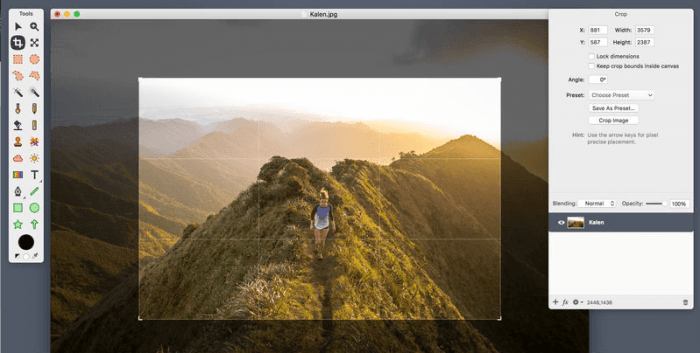
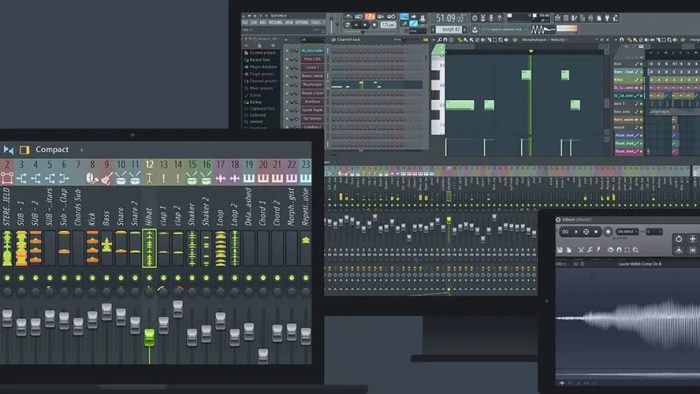

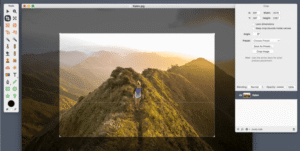
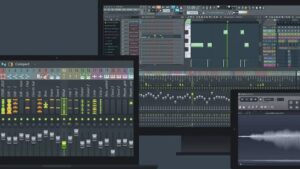








Post Comment